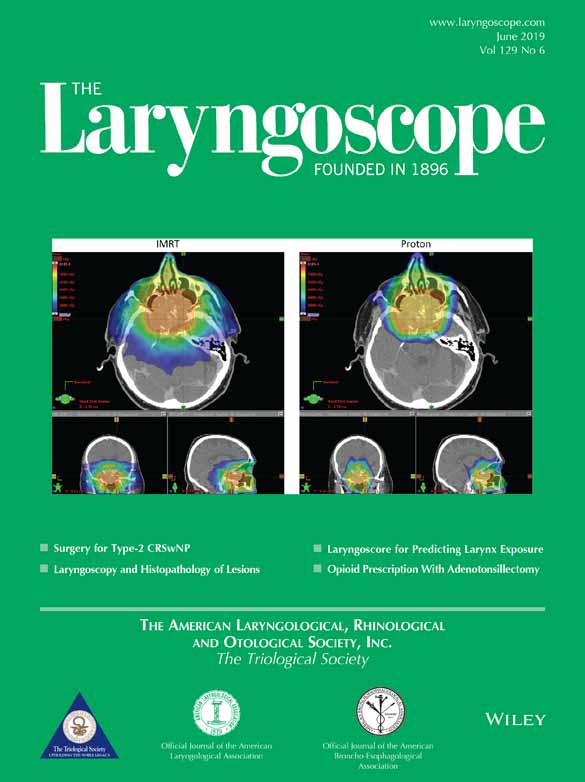Predicting laryngeal exposure in microlaryngoscopy: External validation of the laryngoscore
The authors have no funding, financial relationships, or conflicts of interest to disclose.
Abstract
Objectives
Optimal laryngeal exposure during transoral laryngeal surgery is fundamental. We aimed to evaluate the reliability of a recently proposed score (Laryngoscore) in predicting difficult laryngeal exposure (DLE) in an independent cohort of patients undergoing elective microlaryngoscopy. We also verified the relation between DLE, surgeon's expertise, and difficult intubation, and investigated possible areas for score improvement.
Study Design
Prospective validation study.
Methods
A total of 136 patients were preoperatively evaluated using the Laryngoscore. Patients were divided into three classes according to patient position, type of laryngoscope, and need for external counterpressure to expose the anterior commissure. Based on their mean scores, two groups were identified: good laryngeal exposure (GLE) and DLE. A receiver operating characteristic curve with the Youden index was used to calculate the optimal cutoff value. The χ2 and Fisher exact test were used to correlate GLE and DLE to the surgeon's expertise and difficult intubation. The intraoperative anatomical parameters underlying DLE were also recorded.
Results
The optimal cutoff value for differentiating GLE and DLE was 4, which identified 80.6% of DLE cases. No statistically significant difference in GLE and DLE distribution was found between surgeons (P = 0.43). The correlation between difficult intubation and DLE was statistically significant (P = 0.03). The intraoperative parameters determining DLE were epiglottis characteristics (floppy, tight, or short), bulky abdomen and chest, bulky tongue base, mobile teeth, and a narrow laryngeal aditus.
Conclusion
The Laryngoscore is reliable for detecting DLE preoperatively. The inclusion of additional parameters may allow a more complete assessment and maximize its diagnostic accuracy.
Level of Evidence
2b
Laryngoscope, 129:1438–1443, 2019




